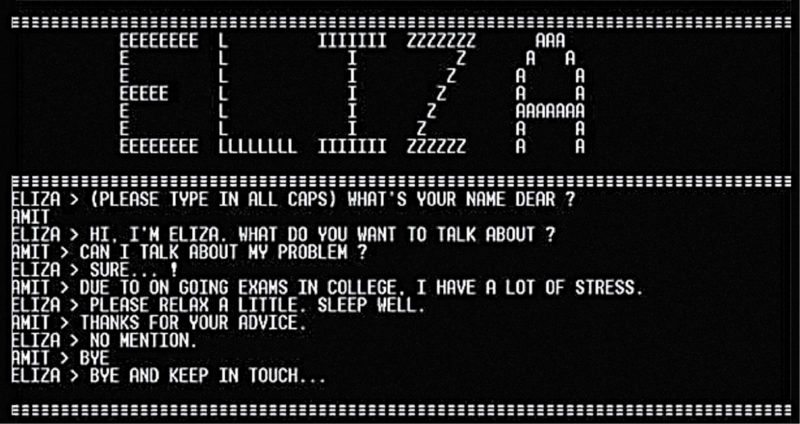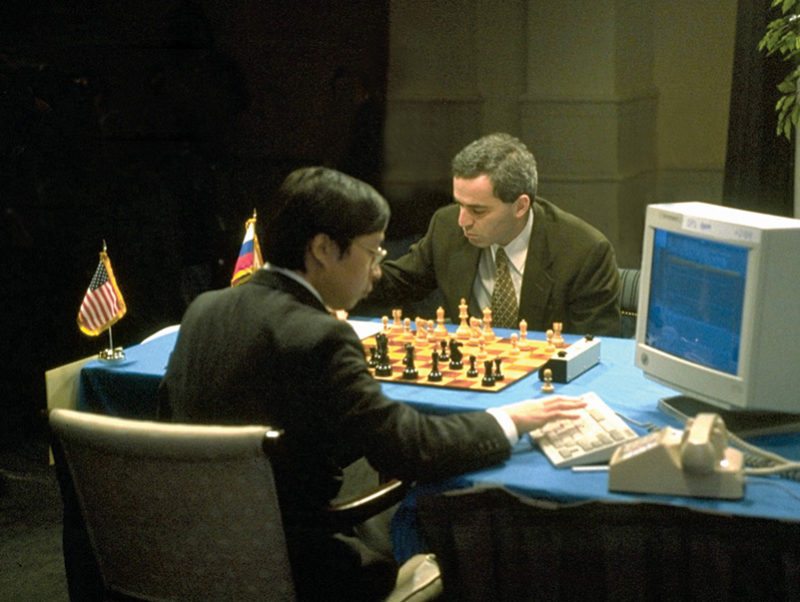Ray Kurzweil, American author, computer scientist, inventor and futurist, once said, “Artificial intelligence will reach human levels by around 2029. Follow that out further to, say, 2045, we will have multiplied the intelligence, the human biological machine intelligence of our civilisation a billion-fold.”
Evolution of AI
The human race has fantasised about thinking machines right from the time of classical Greece. Homer’s Iliad talks about robots that were made by Greek God Hephaestus. While some of these robots were like humans, others were mere machines such as the golden tripods that served food and wine at feasts.
With the advent of modern computers it became feasible to create programs that performed difficult intellectual tasks. The first half of the 20th century saw British mathematicians and philosophers Bertrand Russell and Alfred North Whitehead publish Principia Mathematica, which revolutionised formal logic.
In 1923, Karel Kapek’s play R.U.R. (Rossum’s Universal Robots), staged in London in 1923, was the first to use the word robot in English language. Much later, in 1956, John McCarthy created the phrase artificial intelligence (AI) while looking for words to describe the key topic of a conference. The same year saw the demonstration of the first running AI program, Logic Theorist (LT), written by Allen Newell, J.C. Shaw and Herbert Simon, who were eminent personalities from Carnegie Institute of Technology, USA.

In the decade spanning 1952 to 1962, Arthur Samuel from IBM wrote the first game-playing program, for checkers, with enough ability to challenge a world champion. In 1965, Joseph Weizenbaum from Massachusetts Institute of Technology (MIT), USA, created ELIZA—an interactive program that was capable of participating in a discussion on any subject in English language.
The first national conference of American Association of Artificial Intelligence (AAAI) was held in 1980 at Stanford, USA. By 1990s, key advances had taken place in all areas of AI, with noteworthy achievements in machine learning, intelligent tutoring, case based reasoning, multi-agent planning, scheduling, uncertain reasoning, data mining, natural language understanding and translation, vision, virtual reality, games and many other topics.
And, it was in 1997 that Deep Blue, an IBM supercomputer, beat the current world chess champion, Garry Kasparov. By late 1990s, Web crawlers and other AI based information extraction programs became indispensable in the widespread use of the World Wide Web.
An introduction to AI
AI is the science and engineering of making intelligent machines, more so, intelligent computer programs. In simple terms, if a computer performs a function which if a human was to do would be called intelligent, then we can say the computer has intelligence.
Intelligence is a combination of knowledge and reasoning power since reasoning power construes facts that are unknown to knowledge. This criteria for AI is a very challenging task given that computers work on binary logic. When a computer only knows yes and no, it is demanding to achieve results that are not strictly defined.

For example, if we had to create an AI thermostat to cool a house, the program would need to have knowledge of all seasons, weather conditions like El Niño and passage of time, plus it must be able to understand concepts like warm, cool or too cold, apart from other aspects.
While we do not really realise it, the simplest human functions translate to thousands of lines of computer code. Most current AI systems are designed for only a few specific applications. One of the most popular examples of an AI application was a chess program running on Deep Blue, IBM’s massively-parallel-computing system.
Deep Blue managed to defeat world chess champion Gary Kasparov because it could search 50 to 100 billion positions in the three minutes that each player had, to make their move.
AI applications can be bucketed as knowledge based or expert systems. A minor knowledge based system could be a series of conditional statements, such as:
IF
the animal is a bird
it does not fly
it swims
it is black and white
THEN it is a penguin.
As this system becomes more complex, the time it takes for a computer to arrive at an intelligent outcome becomes unacceptably high. Expert systems try to solve this issue by acquiring more knowledge from a human being by asking questions. Over time, the program learns from experience and can actually solve problems or give advice based on what it has learned.
Some application areas of AI
AI is being used in all spheres of everyday life in developed countries. Given below are some key areas.
Online shopping. e-tailing sites such as www.amazon.com deploy a process called collaborative filtering to compare a customer’s purchase patterns with those of other customers and provide suggestions. AI can take such processes to the next level to increase loyalty.
In the near future, we can expect semi-autonomous agents surfing the Web to help us, that is, their creators with diverse tasks. Intelligent bots will shop for you online, do your financial transactions and more, without your intervention. You would only be required to provide the bots broad inputs with respect to what you want to get done. Websites such as www.AskJeeves.com are using AI in the hope of making the Internet a more intuitive place, where you get things done the same way you would do in the real world.
e-broking. In the Internet trading environment, an e-broker is a system where clients are the prospective buyers and sellers. Each client has a particular wish-list. In security trading, a buyer can specify type of product, number of lots, maximum purchase price, expiry date, time and other details.
The seller can specify product, number of lots, minimum selling price, expiry date, time and the like. The system preserves a database of outstanding requests from prospective buyers and sellers.
For a buyer, the system screens and shortlists a reasonable number of sellers for further analysis. The system matches buyers and sellers in the shortlist. For each buyer-seller pair, the system makes use of a set of rules and comes up with a rating for the pair. It ranks possible sellers according to the ratings. Top-ranking sellers are recommended to the buyer.
In such a brokerage system, AI techniques are applied to the shortlisting stage and the matching stage. The amount of computation increases sharply with a rise in the number of clients and requests. The focus of research is therefore on efficient strategies and algorithms so that the system can respond to clients’ requests within a short span of time. A security trading system is expected to complete several thousand transactions every day and the system has to answer in just a few seconds.
Bioinformatics. AI is critical for the evolution of bioinformatics. Presently, molecular biologists are involved in some notable data-collection projects. Latest genome-sequencing projects are producing a huge volume of data linked to the function and structure of biological molecules and sequences.
Other complementary high-throughput technologies, such as DNA micro-arrays, are swiftly generating big amounts of data that are too overpowering for traditional methods for biological data analysis.
Understanding of this rich data could deeply impact our interpretation of life at the molecular level. However, the illustration of biological knowledge is a very daunting job and increasingly demands more potent and refined computational tools.
AI and other heuristic methods (in particular, machine learning, data mining, cluster analysis, pattern recognition and knowledge representation) could possibly offer key solutions for the fresh hurdles posed by the progressive transformation of biology into a data-massive science.
Some key areas where AI approaches are specifically encouraging and turning out to be fruitful are for prediction of protein’s structure and function, semiautomatic drug design, interpretation of nucleotide sequences and knowledge acquisition from genetic data.
There is no doubt that application of AI to computational molecular biology demands exceedingly interdisciplinary and complementary skills, and these are seldom provided for in most current academic curricula. Interdisciplinary is interesting, however, unless AI and computational biology communities collaborate closely, development of new methodologies and algorithms is likely to lose pace.
Gaming. Another big area in which AI plays a vital role is the gaming industry. In the 1990s, we saw the first attempts to mass-produce AI based toys and games in the form of Tamagotchi dolls, Giga Pets, first widely-released robot, Furby and much more. Later an enhanced type of domestic robot, Aibo, a robotic dog with intelligent features and autonomy, was launched.

AI has also been applied to video games in the form of video game bots, which are designed to stand in as opponents when people are either not available or are not desired. In a game called Left 4 Dead, AI based director decides where enemies brood and how maps are laid out to be more or less demanding at various points of play.
It is important for gamers to feel that the characters that are inside the game are almost real. Certain games are based on neural networking technology, which is used to create characters that learn as the game progresses. Characters in a fighting game, for example, could be taught battle skills in the same manner as the humans.
Then there are computing machines available in the market, which can play master-level chess with you. These are based on some level of AI and use aggressive computation force in evaluating hundreds of thousands of different positions. To beat a world champion by sheer computing force and known reliable heuristics requires evaluation of as many as 200 million positions per second.
Music and AI. Since long, music has evolved with technology. Computer-science engineers have been trying to make computers match the activities of skilful musicians, using AI. Composition, performance, music theory and sound processing are some of the major areas on which research in music and AI is on.

Also, efforts to model music cognition with AI are generally looked upon as methods of improving our understanding of both human psychology and intellect. Once an effective model of the music listener has been accomplished, it can be improvised into a more complex model consisting of the listener, performer and composer, all put together. It then becomes a self-learning AI system. For example, a composing program can get all the required input information from its environment by listening to musical performances. Also, this more sophisticated model can be very insightful in terms of understanding the behaviour of musicians.
Conclusion
Haley Joel Osment played a robot created with the ability to have emotions, dreams and desires in Steven Spielberg’s movie A.I. Artificial Intelligence, a sci-fi adaptation of Pinocchio story.

There has been a certain level of resistance to AI due to the fear of the world being taken over by machines, as the gap between humans and machines becomes narrower. However, there is also the belief that a machine can never be as good as a human being in making business decisions.
There is a school of thought that believes that human-level intelligence can be achieved by writing large numbers of programs but most AI researchers believe that new and creative fundamental ideas are required. While it cannot be predicted by when human-level intelligence will be achieved, we do not really need to simulate conscious human thought as such.
The emphasis today is on developing computers that can be operated intuitively with minimum human involvement. This demands a system that can crunch data on a platform and in a device-agnostic manner. Ideally, development of meaningful AI will demand that machines obtain some form of human consciousness to create useful and powerful assistants.
While there has been rapid progress in hardware, storage and parallel-processing architectures, the field of artificial consciousness remains in its infancy stage. And much like the human body, this system is expected to carry out its functions and adapt to its user’s requirements without the need of the user to go into minute details of its functioning.
Deepak Halan is associate professor at School of Management Sciences, Apeejay Stya University






